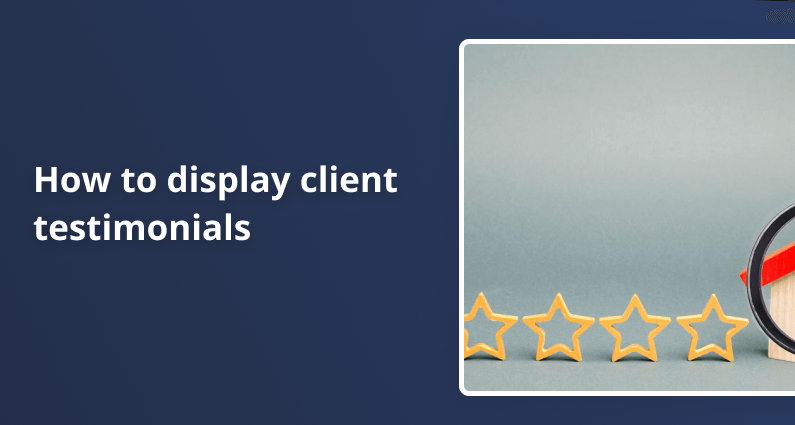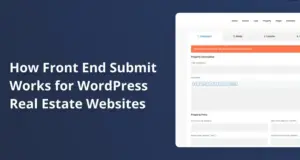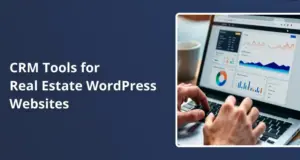Integrating Zillow, Google, and Facebook Reviews on Your WordPress Real Estate Site: A Comprehensive Guide. People don’t hire an agent after reading one listing page. They look for proof. Reviews from Zillow, Google, and Facebook carry that proof because they live outside your site, on platforms buyers and sellers already trust.
When you bring those voices onto your WordPress site, you turn a quick visit into absolute confidence. The goal isn’t to stuff a page with stars. It’s to show clear, verified feedback in a way that fits your brand, loads fast, and stays up to date with almost no manual work.
What each platform adds to your story
Zillow is built around agents and past transactions, so reviews lean into results: pricing advice, negotiation wins, and how you handled bumps along the way.
That’s gold for someone deciding who will list their home.
Google reviews sit next to your business name in Search and Maps. They help people find you but also set early expectations about response time, communication, and consistency. Even a short “Called back in 10 minutes” says a lot.
Facebook recommendations feel personal. Friends see them, names are familiar, and the tone is casual. They add a human layer on your site: little stories you can’t script.
If you work outside the U.S., Zillow may not be a fit. Keep Google and Facebook, and swap Zillow with a local portal. The setup steps are nearly the same.
A simple plan before you touch a plugin
Decide what you want visitors to feel in the first 10 seconds. Pick three reviews that sum up your style: one about speed, one about market knowledge, one about care. Place those where people can’t miss them, like on the homepage.
Then, it gives deeper readers a path to more: a full testimonials page with filters and agent pages that show each agent’s own feed. This plan stops you from dumping every review in one place and keeps the experience tidy.
Smart filtering helps. You don’t need to hide anything, but you also don’t need to show 47 near-duplicates saying “Great job!” Mix sources and topics. Short quotes belong up top; longer stories belong lower on the Page.
Manual, embed, plugin, or custom code: how they actually feel to run
Plenty of agents start manually. Copy text into a Testimonials block or upload a screenshot. It’s quick, and you get complete control of styling. The trade-off: it never updates by itself, screenshots aren’t searchable, and visitors can’t click through to the source. If you use this path, treat it like a highlight reel, not the main feed.
Official embeds are the next step.
Zillow offers a review widget through Premier Agent tools that auto-updates and carries the Zillow brand. Google doesn’t ship a full reviews widget, but a Google Map embed shows your star rating with a link to all reviews.
Facebook lets you embed individual recommendation posts. These feel “real” because they come straight from the source, though you get limited design control, and extra scripts can slow a page.
For most WordPress sites, plugins are the sweet spot. They connect to APIs, fetch reviews on a schedule, cache them server-side, and output clean HTML. You get blocks and shortcodes, theme-aware styling, and filters like “only show 4★ and up.”
Single-source tools focus on one platform (for example, a Zillow-only plugin that talks to Bridge). Multi-source tools pull from several networks and keep everything consistent so your design doesn’t turn into a patchwork of mismatched widgets.
Custom API work comes last. It gives you complete control over layout, caching, and data rules. You can merge sources, add tags like “first-time buyer,” and print clean HTML for SEO. It also means you own the maintenance: API keys, tokens, rate limits, and surprises when a provider changes a field name. Great for larger teams, heavy traffic, or unique needs; heavy lift if you’re solo.
Building it in WordPress without breaking your theme
Start with structure. Create three spots: Homepage highlights, a full Testimonials page, and Agent pages.
On the homepage, the ‘Homepage highlights’ section serves as a quick reference for visitors. It’s like a ‘best of ‘album that showcases the most compelling reviews, encouraging visitors to explore more. Think of a slim strip under your hero. Two or three short quotes with source logos and a link to more. Keep it high on the Page to support your main call to action.
On the Testimonials page, show more depth. A grid or list works well, with filters for “Google,” “Zillow,” and “Facebook.” Add a soft header that says what people can expect: honest client feedback pulled straight from these platforms.
Agent pages are your ace. They personalize the user experience by providing a comprehensive view of each agent’s performance. Pull in that agent’s Zillow feed, then sprinkle in one Google and one Facebook item that mention the agent by name. Visitors scanning multiple agents can quickly feel who fits them.
Connecting each source, step by step
Zillow
Many WordPress plugins ask for your Zillow screen name or profile ID and, if they use the official route, an access token through Bridge Interactive. Once connected, you’ll choose a layout and a count. Ensure the Zillow “Z” icon or a text label stays visible. Attribution helps trust and meets display rules.
You’ll usually need your Place ID and, in many cases, a Google Cloud API key with Places enabled. Some plugins offer workarounds if you run a service-area business since Google can be picky about locations without a public address. When in doubt, add a clean “Read all reviews on Google” link next to your on-site feed.
You connect your Business Page through a login flow and grant read access for recommendations. Pick the Page if you manage more than one. Facebook embeds can feel heavy, so I prefer plugins that fetch content server-side and output it as HTML while still showing the “f” mark or a “From Facebook” label.
Design that reads fast and feels consistent
Let your theme lead. If your headings are bold and rounded, your review cards should match that vibe. Keep reviewer names clear, dates visible, and star icons simple. Don’t let tiny gray text hide the good stuff.
Mobile matters. Carousels should swipe smoothly, and grids should stack cleanly. A 3-column desktop grid often becomes a 1-column stack on phones; test that your card spacing still feels balanced.
Accessibility isn’t extra. Use real text, not only images, for review content. Add alt text to source logos. Keep the color contrast strong enough that stars and dates are readable in sunlight.
Quick design wins
- Keep cards short above the fold; put longer stories lower on the Page.
- Show source logos that are small but clear; link to the profile or whole review thread.
- Add gentle motion at most: subtle fades beat flashy auto-scrolls.
Where reviews should live on the Page
There’s no single correct answer, but there are patterns that work:
Homepage
Place a small review strip under your hero or your “How we work” section. Keep it tidy. Include two short quotes and one link to more. This will support your primary CTA instead of stealing attention from it.
Testimonials page
This is where you open the tap. A larger grid with filters and pagination is fine. You can pull the latest 12 from all sources and offer buttons to “See more on Zillow,” “See more on Google,” and “See more on Facebook.” That balance keeps the Page fast while proving depth.
Agent pages
Let each agent’s voice come through. If a review mentions a neighborhood or a price band, great, visitors want those real-world details. If your theme supports tabs, a “Reviews” tab keeps the profile clean.
Location pages can also work. If you have pages for “Buy in [Neighborhood],” show one or two reviews that reference that area. This makes the Page feel relevant without pretending it’s a listing.
Keep it fast: caching, limits, and safe choices.
Speed makes or breaks trust. People bounce when a section stutters.
Favor plugins that fetch and cache data on the server. That way, the Page prints plain HTML and doesn’t need to phone three outside services on every view.
Set a refresh schedule. Daily is fine for most sites, but keep the number of reviews per view modest: nine on the testimonials page, three on the homepage, a handful on agent pages.
Use lazy loading for images. Many review feeds show profile photos; those can add up. Test with PageSpeed Insights and fix any “render-blocking” warnings by moving heavy scripts to the footer or turning off unneeded widget files.
If you love a platform’s official embed, consider using it on one Page only, then mirroring the content with a lighter feed elsewhere. This way, you get the brand feel where you want it and keep performance everywhere else.
SEO: what helps and what hurts
Search engines can read on-page review text, which helps long-tail queries like “agent who answers fast in [city].” That said, don’t add Review or AggregateRating schema to third-party quotes as if they were first-party reviews you collected yourself. Google’s policy is clear about where review snippets make sense and where they don’t; see the official docs on Review snippets.
Link back to the source when you can. A small “See on Google” or “See on Zillow” near each card is enough. It proves the quote is real and allows visitors to explore more without bloating your Page.
Avoid doorway pages like “All Zillow reviews,” “All Google reviews,” and “All Facebook reviews” as separate thin pages. One strong testimonials page with filters is better for users and your site structure.
Compliance, attribution, and the line you shouldn’t cross
Never change a reviewer’s words or the star count. Trimming for length is fine as long as the meaning stays the same. Don’t paste reviews from a rival’s Page or scrape content you don’t have rights to show.
Keep platform marks or labels in place. A tiny Zillow logo or a “From Facebook” tag helps people trust what they see and meets display rules. Many plugins handle this for you; don’t remove it in CSS just to “keep things clean.”
If an API stops responding or a token expires, your feed should fail safely. A friendly fallback like “Reviews are loading, see the full list on Google” with a link keeps the valuable Page until you fix the connection.
International setups without extra fuss
Working outside the U.S.? Keep Google and Facebook. Their reach is global. Replace Zillow with a local site your audience knows. In the UK, many firms show feedback from Rightmove or allAgents.
In Canada, Realtor.ca is common. If your plugin doesn’t support a local source, pair a light official embed on the testimonials page with your Google and Facebook feeds everywhere else.
If your site runs in more than one language, pick a plugin that lets you translate labels and button text. The review content can stay in its original language, but headings like “What clients say” should match the page language.
Maintenance that takes minutes, not hours
Tech saving you time today shouldn’t cost you more next month. Put small habits in place:
- Update review plugins with your other updates so API changes don’t catch you off guard.
- Once a month, check that new reviews flow and links to complete profiles are still open.
- Every quarter, rotate homepage highlights so repeat visitors see fresh wins.
If you run a newsletter, you can feature a short client quote and link to your testimonials page. This will attract a few more eyes to the section and keep the flywheel turning.
Ask for more reviews the easy way.
Most happy clients won’t leave a review unless you ask. Make it simple and kind.
A light process that works
- After closing, send one short email with your Google link and your Zillow link if you’re U.S.-based.
- Add a “Review us on Google” button under your on-site feed; people often click it while still feeling the glow.
- A small QR code on a card can point to your review page if you host open houses.
You don’t need to push. A clear path and a thank-you go a long way.
Small code touches you might actually use
Most review plugins give you a block, but shortcodes are handy in templates:
[reviews source="google,zillow,facebook" layout="grid" columns="3" count="9" min_rating="4" show_logo="true"]Use your theme’s design tokens where you can. You want this section to look like it was built with the site, not taped on.
Troubleshooting without panic
If a feed looks empty, check tokens and quotas first. Google’s Places API has rate limits tied to your Cloud project. Facebook tokens expire; most plugins warn you before that happens. Zillow access through Bridge may require confirming your profile or renewing access. Clearing the plugin’s cache can also bring feedback when stuck on stale data.
When plugins overlap, turn off duplicate features. If two tools load a slick carousel library, you’ll feel it in your Lighthouse score. One source of motion is enough.
If reviews turn into a wall of text, the problem is your layout choice, not the content. Tighten the number per Page, add “Read more” cutoffs, and move longer stories to a lower section.
Helpful links you can keep handy
- Google Place ID and Maps Platform basics: https://developers.google.com/maps/documentation/javascript/place-id
- Google review snippet policy: https://developers.google.com/search/docs/appearance/structured-data/review-snippet
- Facebook Page Recommendations help
- Bridge Interactive (Zillow partner platform): https://www.bridgeinteractive.com/
- WordPress.org plugin directory (search pages for your picks): https://wordpress.org/plugins/
You don’t need a fancy carousel on every page or a hundred five-star quotes shouting at once. You need a few honest voices in the right places, a clean path to more, and a setup that updates itself. Start with three strong quotes on the homepage. Add a full testimonials page with filters. Give each agent their own feed. Keep it fast with server-side caching. Attribute the source, play fair with the words, and let your work speak.
Do that, and your site stops whispering “trust me” and starts showing why people already do.









